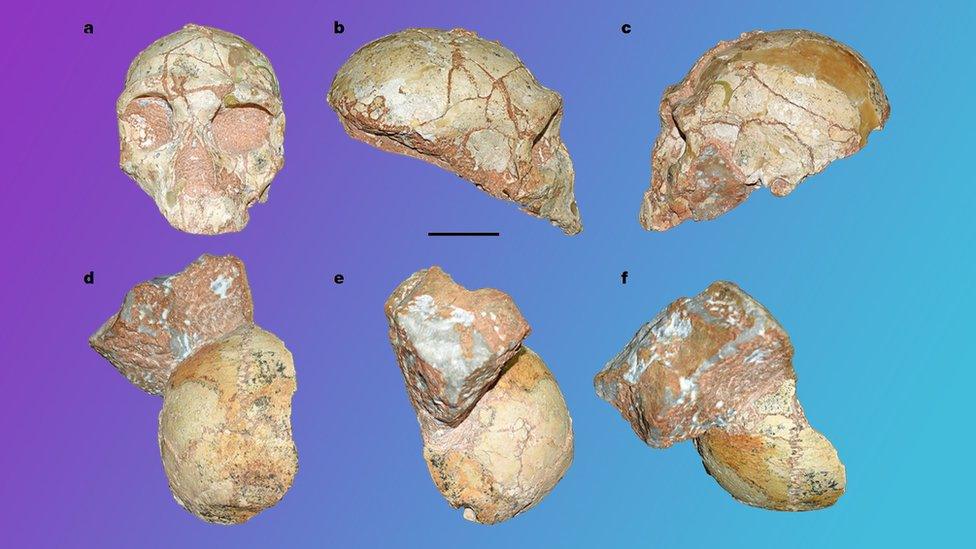Human skull fossil could rewrite human story
- Published
- comments

The fossil of a human and Neanderthal skull (Figure a - c is the Neanderthal skull) (Figure d - f is the human skull)
Scientists have discovered a human skull in Greece which is a whopping 210,000 years old!
Experts say it is the earliest evidence for modern humans outside Africa.
If the claim is verified - and many scientists want more proof - it is an important discovery because it changes the timeline of our species and pushes back the arrival of the first Homo sapiens (the scientific name for the human species) into Europe by 150,000 years.
It had been thought that Neanderthals had the continent to themselves - but now it seems that our species and Neanderthals interacted for much longer.
What is a Neanderthal?
Neanderthals are our extinct ancient relatives, but they were a distinct species called Homo neanderthalensis.
Together with an Asian people known as Denisovans, Neanderthals are our closest ancient human relatives.
We now know that Neanderthals were stocky with strong arms and hands, and that they had large skulls - longer and lower than ours - with sloping foreheads and no chin.
• Their ancestors left Africa 400,000 years ago
• Travelled to Europe and Asia where they evolved into Neanderthals
• Became extinct 40,000 years ago
Modern humans "at least 210,000 years old"
Computer generated image of the 210,000-year-old human skull merged with the 170,000-year-old Neanderthal skull. The human skull is shown in yellow and Neanderthal skull is shown in multicolour.
The 210,000-year-old human skull was found in Apidima Cave in Greece alongside a second skull which is estimated to be 170,000 years old and has Neanderthal features.
The two fossilized human skulls were discovered in the late 1970s, but had not been described in detail until now.
Researcher Katerina Harvati and colleagues used modern dating and imaging techniques to compare the two skulls.
The 170,000-year-old skull has Neanderthal-like features, such as a thick, rounded brow ridge.
Whereas the 210,000-year-old skull has a combination of modern human and ancestral features, such as a rounded back of the skull, a characteristic unique to modern humans. Being at least 210,000 years old means that it predates the previously reported oldest Homo sapiens in Europe by more than 150,000 years.
These findings suggest that modern humans moved out of Africa earlier, reaching further than previously thought.
- Published11 April 2017
- Published2 September 2014
- Published7 February 2018
